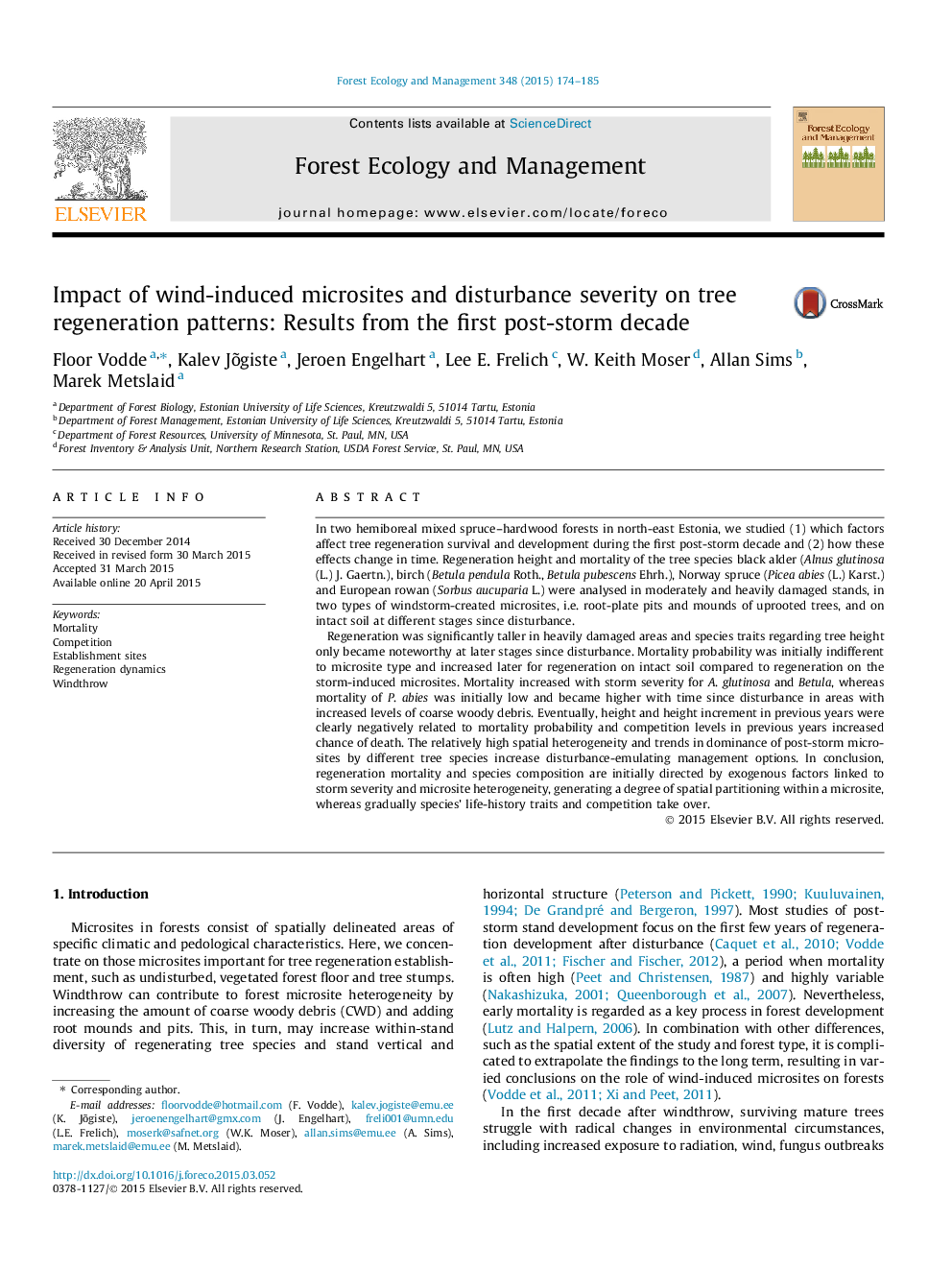| Article ID | Journal | Published Year | Pages | File Type |
|---|---|---|---|---|
| 6542808 | Forest Ecology and Management | 2015 | 12 Pages |
Abstract
Regeneration was significantly taller in heavily damaged areas and species traits regarding tree height only became noteworthy at later stages since disturbance. Mortality probability was initially indifferent to microsite type and increased later for regeneration on intact soil compared to regeneration on the storm-induced microsites. Mortality increased with storm severity for A. glutinosa and Betula, whereas mortality of P. abies was initially low and became higher with time since disturbance in areas with increased levels of coarse woody debris. Eventually, height and height increment in previous years were clearly negatively related to mortality probability and competition levels in previous years increased chance of death. The relatively high spatial heterogeneity and trends in dominance of post-storm microsites by different tree species increase disturbance-emulating management options. In conclusion, regeneration mortality and species composition are initially directed by exogenous factors linked to storm severity and microsite heterogeneity, generating a degree of spatial partitioning within a microsite, whereas gradually species' life-history traits and competition take over.
Related Topics
Life Sciences
Agricultural and Biological Sciences
Ecology, Evolution, Behavior and Systematics
Authors
Floor Vodde, Kalev Jõgiste, Jeroen Engelhart, Lee E. Frelich, W. Keith Moser, Allan Sims, Marek Metslaid,
